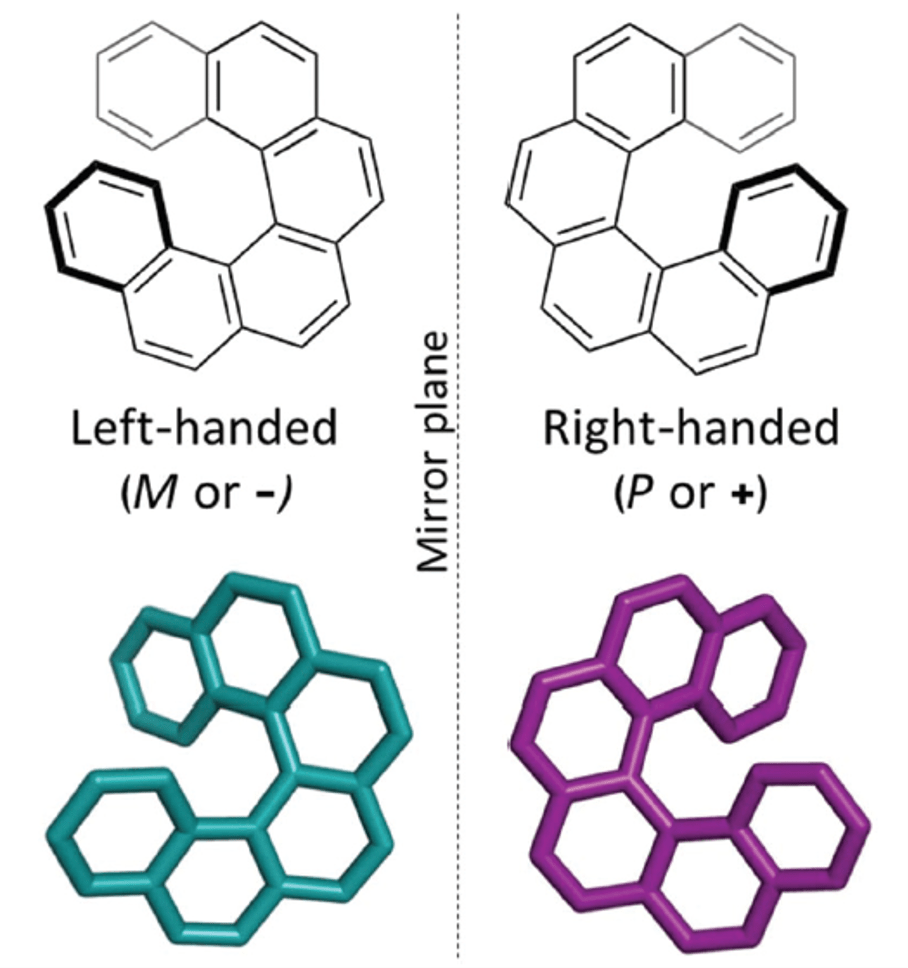
Scheme of [6]-helicene molecules
Laboratoire: MPQ (Matériaux et Phénomènes Quantiques), Université Paris Cité & CNRS
Adresse: Bâtiment Condorcet – 10 Rue A. Domon et L. Duquet – 75013 Paris
Directeur de stage/thèse: Amandine Bellec
Tel: 0157276290
e-mail: amandine.bellec@u-paris.fr
Scientific project:
Chiral molecules are present in the form of two non-superimposable enantiomers due to the absence of inversion center (figure 1). They then offer the unique possibility of being able to create spin selectivity at the interface with a metal. This effect, known as the CISS (chiral induced spin-selectivity) effect, was demonstrated in the early 2000s on monolayers of lysine molecules, long carbon chains, adsorbed on Au [1]. But, the origin of this effect is still widely debated [2]. Experimentally, the CISS effect brings together all the phenomena for which the chirality of molecular species influences the spin selectivity of various electronic processes, whether for transmitted electrons [3,4], for transport measurements [5] or even during chemical reactions. To illustrate this last point, studies have been able to demonstrate enantio-selectivity during the adsorption of chiral molecules on magnetic substrates: depending on the orientation of the magnetization, an enantiomer is preferentially adsorbed [6].
In this context, the internship will focus on the interfaces between chiral molecules and metallic or ferromagnetic substrates in order to understand their properties. For this, measurements by scanning tunneling microscopy (STM) will be carried out. For the structural properties, it will be important to understand how chiral molecules adsorb on different metallic substrates. Furthermore, tunneling spectroscopy will provide access to the electronic properties of molecules and it will then be interesting to understand how the CISS effect translates into transport through molecular orbitals, before testing the spin selectivity.
[1] Ray et al., Science 283, 814-816 (1999).
[2] Evers el al., Advanced Materials, 2106629 (2022).
[3] Göhler et al., Science 331, 894-897 (2011).
[4] Kettner et al., The Journal of Physical Chemistry Letters 9, 2025-2030 (2018).
[5] Rodríguez et al., J. Am. Chem. Soc. 144, 24 (2022).
[6] Banerjee-Ghosh et al., Science 360, 1331-1334 (2018).
Methods and techniques: scanning tunneling microscopy under ultra-high vacuum
Possibility to go on with a PhD: YES
Envisaged fellowship: Doctoral School
À lire aussi
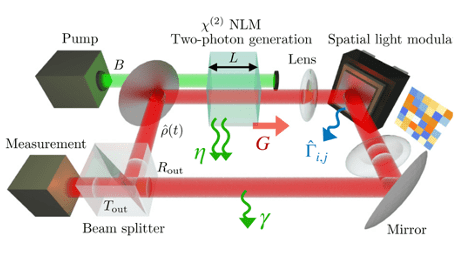
Equilibre émergent dans les machines d’Ising tout-optiques à trajectoires quantiques uniques
Une collaboration entre l’équipe Théorie de MPQ, le CREF de Rome et l’Université La Sapienza a montré que des systèmes optiques multimodes, excités par des processus à deux photons, peuvent atteindre un équilibre thermique au niveau des trajectoires quantiques...
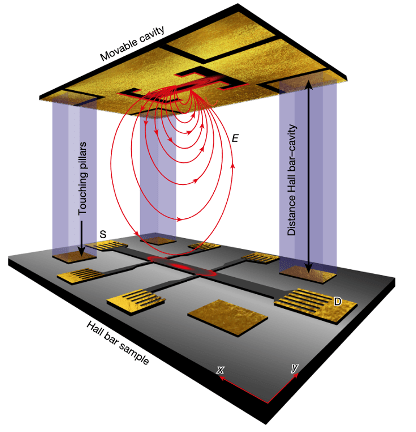
Cavity-enhanced fractional quantum Hall phases and cavity-modified spin splittings
Une collaboration entre l’Équipe Théorie de MPQ, l’ETH Zurich et le Flatiron Institute a démontré, à la fois théoriquement et expérimentalement, que les champs du vide géants confinés dans une cavité peuvent profondément modifier les interactions électron-électron...
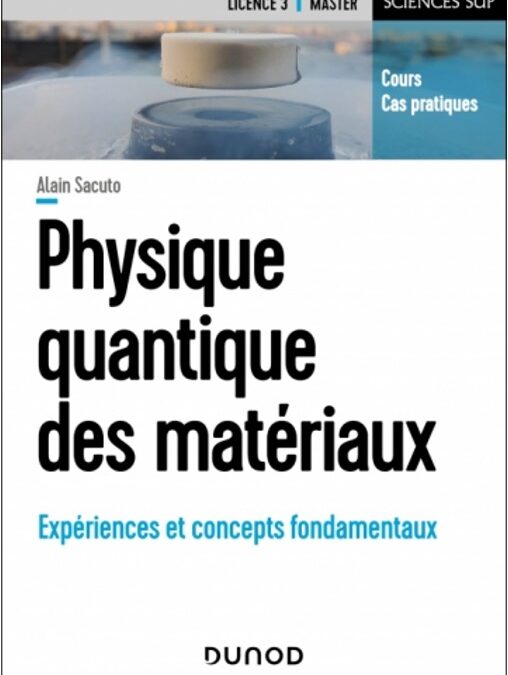
Parution du livre “Physique quantique des matériaux ” par Alain Sacuto
Alain Sacuto (équipe SQUAP) publie aux éditions Dunod son livre sur la Physique quantique des matériaux, fruit de nombreuses années d’enseignement à l’Université Paris Cité. La physique quantique des matériaux est au cœur des développements technologiques les plus...
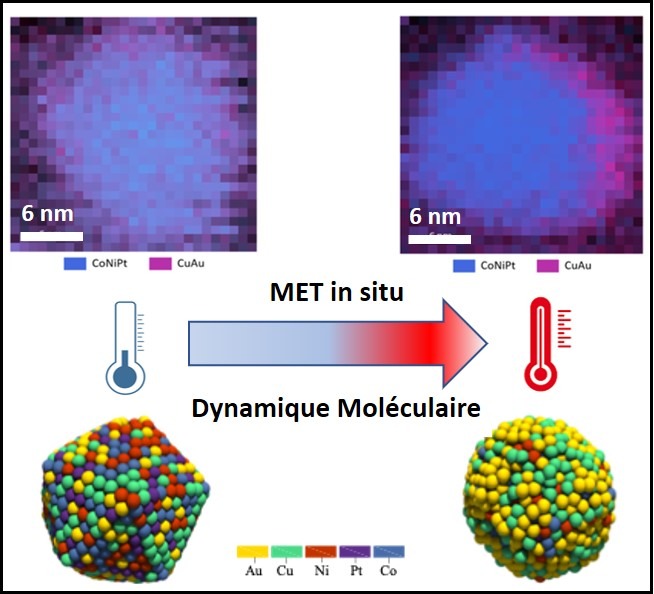
Stabilité thermique des nanoalliages à haute entropie : réalité ou chimère ?
En étudiant à l’échelle atomique le comportement thermique de nanoparticules composées d’or, de cobalt, de cuivre, de nickel et de platine, des scientifiques ont révélé que la stabilité de ces nanoalliages dits à haute entropie est beaucoup plus faible qu’espérée, car...
